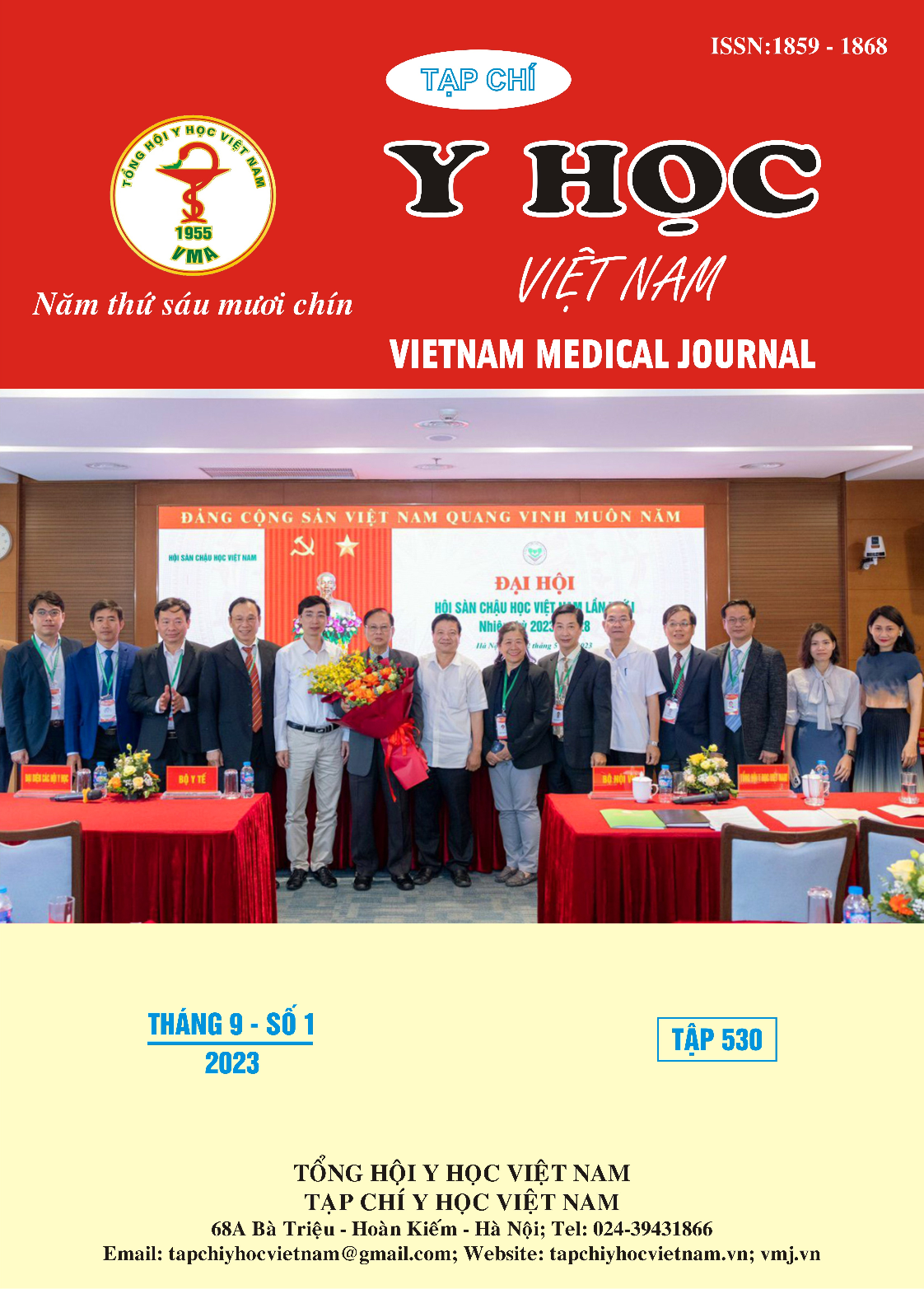CAUSES OF OPPORTUNITY SERIOUS INFECTIONS AND ASSOCIATIONS WITH IMMUNOLOGICAL, VIROLOGICAL, IN HIV/AIDS PATIENTS WHO FAILED THE FIRST-LINE ART REGIMEN
Main Article Content
Abstract
Introduction: Antiretroviral therapy (ART) restores immune function and reduces HIV-related adverse events. But treatment failure affects this advantage and leads to increase opportunistic infections and mortality rates in HIV patients. The purpose of this study was to determine the causes of opportunistic infections (OIs) and the relationship between OIs with immunology and virology in HIV/AIDS patients who failed treatment with first-line ARV regimens at the National hospital for Tropical diseases and Center for Tropical dieases, Bach Mai hospital. Participants and Methods: We conducted a cross-sectional, retrospective descriptive study in 72 HIV/AIDS patients who failed first-line ART regimens at the National hospital for Tropical diseases and Center for Tropical dieases, Bach Mai hospital from January 2017 to August 2021. Results: Among 72 HIV/AIDS patients who failed first-line ART regimens, 45 had opportunistic infections at the time of diagnosis of treatment failure. Most of the patients were at clinical stage III, IV. Oral Candidiasis accounted for the highest rate of 36.7%, followed by Tuberculosis and blood fungus Talaroymyces marneiffei accounted for 28.3% and 11.7%. Toxoplasma encephalitis accounted for 10%, PCP pneumonia and CMV infection accounted for the lowest rate of 3.3%. There was no relationship between the occurrence of OIs with first-line ART regimen. However, with p<0.05, there were differences in BMI, CD4 T-cell count and viral load between the 2 groups patients with and without OIs at the time of treatment failure. Patients with T-CD4 counts of fewer than 50 cells/cm3 have a higher risk of Tuberculosis and oral Candidasis than patients with T-CD4 conuts of more than 50 cells/cm3. Conclusion: Early detection of treatment failure with first-line ARV regimens is very important to promptly switch to second-line ARV regimens, improving survival prognosis for HIV/AIDS patients.
Article Details
Keywords
opportunistic infections, treatment failure, first-line ART, HIV/AIDS.
References
2. Boettiger DC, Nguyen VK, Durier N, et al. Efficacy of second-line antiretroviral therapy among people living with HIV/AIDS in Asia: results from the TREAT Asia HIV observational database. J Acquir Immune Defic Syndr. 2015;68(2):186-195.
3. Thao VP, Quang VM, Wolbers M, et al. Second-Line HIV Therapy Outcomes and Determinants of Mortality at the Largest HIV Referral Center in Southern Vietnam [published correction appears in Medicine (Baltimore). 2016 Jan;95(1):1.
4. Ramadhani HO, Bartlett JA, Thielman NM, et al. The Effect of Switching to Second-Line Antiretroviral Therapy on the Risk of Opportunistic Infections Among Patients Infected With Human Immunodeficiency Virus in Northern Tanzania. Open Forum Infect Dis. 2016;3(1):ofw018.
5. Jayani I, Susmiati, EWinarti, et al. The Correlation between CD4 Count Cell and Opportunistic Infection among HIV/AIDS Patients. J Phys: Conf Ser. 2020;1569:032066.
6. Damtie D, Yismaw G, Woldeyohannes D, Anagaw B. Common opportunistic infections and their CD4 cell correlates among HIV-infected patients attending at antiretroviral therapy clinic of Gondar University Hospital, Northwest Ethiopia. BMC Research Notes. 2013;6(1):534. doi:10.1186/1756-0500-6-534
7. Đoàn Thu Trà. Xác định tính kháng thuốc của HIV ở bệnh nhân thất bại với phác đồ bậc 1 và đánh giá hiệu quả điều trị của phác đồ thuốc kháng vi rút bậc 2 trên bệnh nhân HIV/AIDS. Viện nghiên cứu khoa học Y-Dược lâm sàng 108. 2015.
8. Miziara ID, Weber R. Oral candidosis and oral hairy leukoplakia as predictors of HAART failure in Brazilian HIV-infected patients. Oral Dis. 2006;12(4):402-407.


